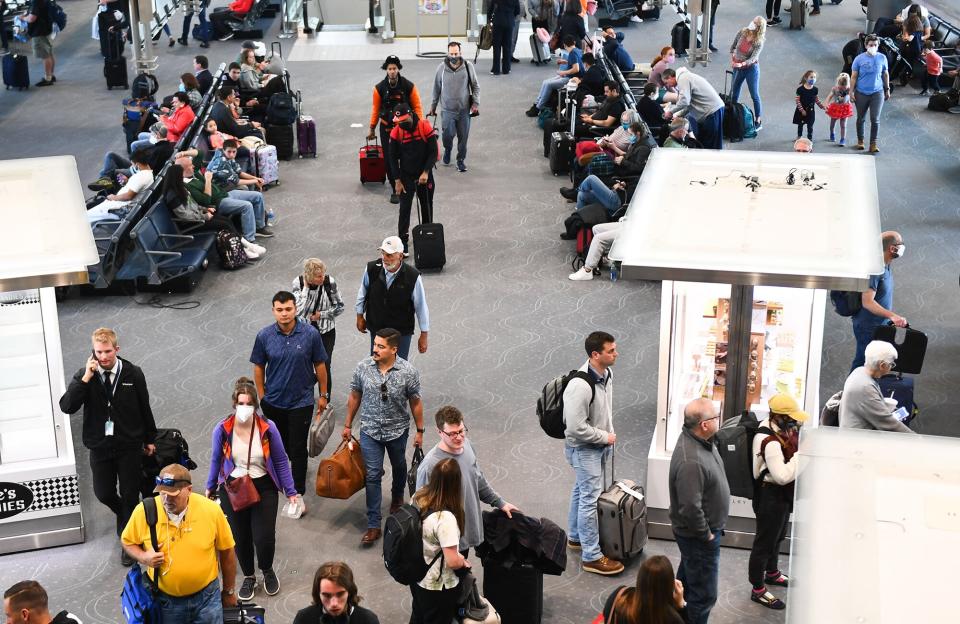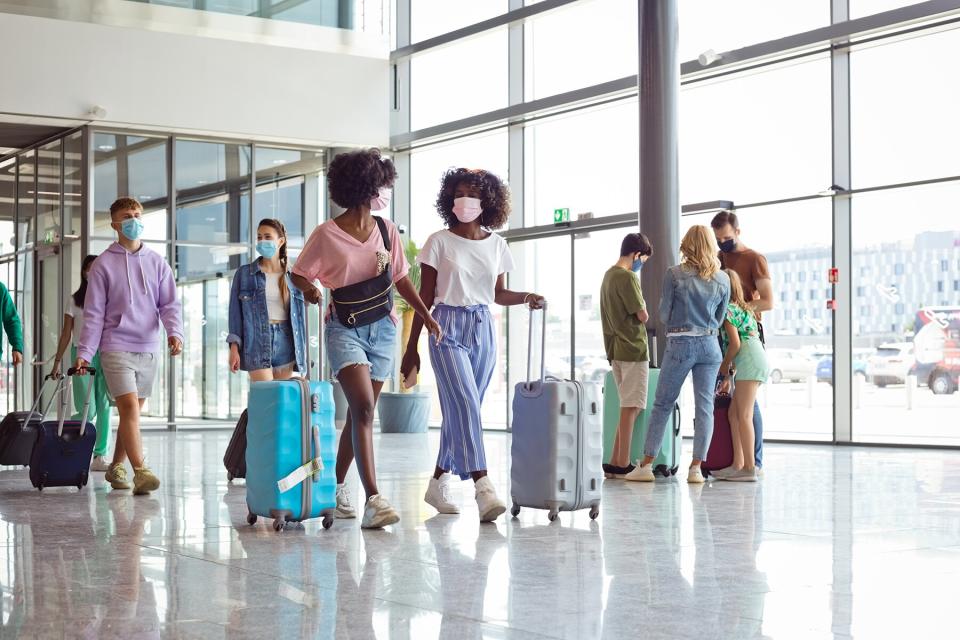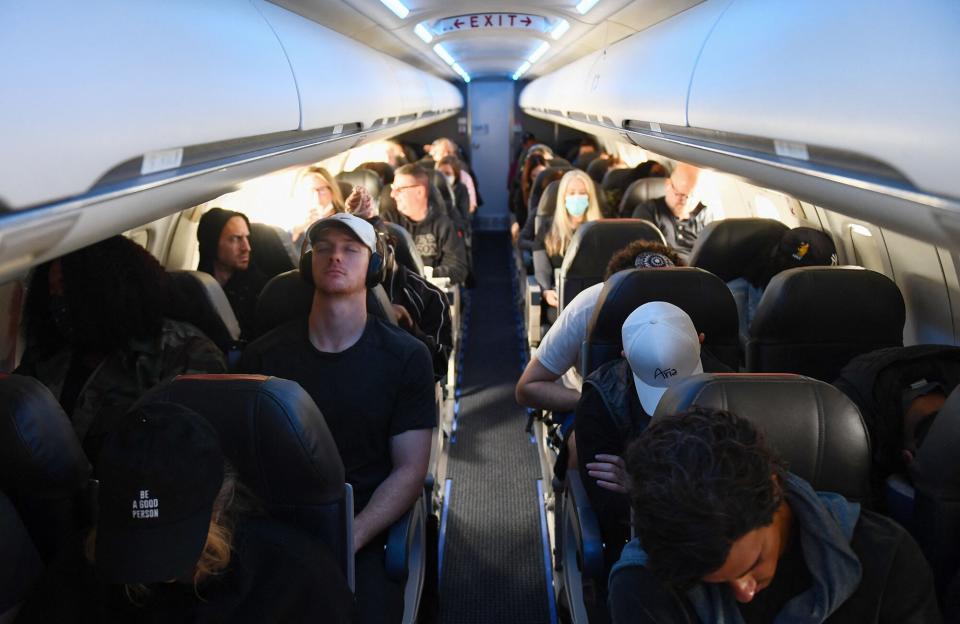How to Minimize COVID-19 Risk on a Plane As Passengers Ditch Masks, According to Doctors
As passengers' comfort levels may vary now that mask mandates have been dropped from planes and in airports across the country, experts say there are still some things travelers can do to protect themselves even if the people around them aren't masking up.
The first and most important thing people can do is get vaccinated, Dr. Deborah Theodore, an infectious diseases specialist at NewYork-Presbyterian, told Travel + Leisure. After that, the next most important protection is still continuing to wear a mask even if others aren't.
"I don't think the average person needs to feel unsafe flying," Theodore said. "The average person should feel comfortable wearing a mask and going about their business… We can take measures to protect ourselves but also explore."

PATRICK T. FALLON/AFP via Getty Images
While the federal transportation mask mandate was voided by a federal judge in Florida last month, the Centers for Disease Control and Prevention has reiterated its recommendation for Americans to wear masks on public transportation while the Department of Justice appeals the decision at the request of the CDC.
Airlines have also reviewed their cancellation policies for passengers who may not be comfortable taking to the skies.
But there are certain things doctors told T+L that individual passengers can do to keep themselves safer. These are their tips.
Be Up to Date With Your COVID-19 Vaccines
Doctors agreed getting vaccinated — and getting boosted — was the best thing people could do to keep themselves safe while traveling.
"The most important parts in terms of protection are making sure you're up to date with vaccinations," Theodore said. "That's really key to protect you in case you do get infected to make sure you have a mild infection."

izusek/Getty Images
Wear a Mask
While many passengers will likely opt not to wear a mask in airports or on planes, doctors said continuing to wear one is key. It's also important to opt for the most comfortable mask that offers the most protection.
"You can't control what people around you are doing, but picking a good quality mask that is well fitting and that is reasonably comfortable for you to wear the whole flight... really will protect you from breathing an infectious virus," Theodore said, adding it was important to wear one during times when the risk of transmission was extra high, like during the boarding process "when everyone is crammed trying to get on the plane."
Choosing when to take your mask down and for how long can also decrease risk, added Dr. Jessica Shepherd, the chief medical officer at Verywell Health.
"When you're eating, bring it down to ingest your food, and even while chewing bring it back up," Shepherd said. "And that's just following the best precautions... the most they can do [to] minimize their risk of transmission."
Choose a Direct Flight
While some travelers may be tempted to pick connecting flights that break up the time spent on a plane, it also increases the total travel time. Direct flights shorten exposure risk.
"If you're breaking your flight up, you're spending more time overall in crowded settings and you have the boarding process going on twice," Theodore said. "The longer you're in a crowded setting, the more exposure you're getting."
Practice Good Hand Hygiene
Good hand hygiene is a great habit to have in any situation, and it's especially important when it comes to minimizing risk of an infection.
"In travel, being in the airport, even on the plane, take the opportunity to use hand sanitizer or — the best way — hand washing," Shepherd said.
Theodore added it's also a good idea to do a quick wash before eating.

PATRICK T. FALLON/AFP via Getty Images
Think About Where You're Sitting
Airlines are no longer blocking middle seats and flights are increasingly full, but Shepherd said travelers can minimize risk by flying when the plane is likely to be emptier. Travelers can also look to purchase seats with fewer people around them — or even consider upgrading if it means sitting in a smaller cabin.
"There are times of the day that will be heavier than others," Shepherd said. "The fewer number of seats adjacent to your seat will be less risky to transmission."
Alison Fox is a contributing writer for Travel + Leisure. When she's not in New York City, she likes to spend her time at the beach or exploring new destinations and hopes to visit every country in the world. Follow her adventures on Instagram.

